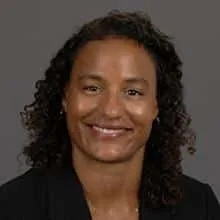In 2021, my 43-year-old cousin took his life. After decades of escalating contact with the juvenile and criminal justice systems, he walked out of his home on an otherwise uneventful August day and shot himself.
By this time, many within our once tightly bound family had begun to lose track of where he was living and what his life was like. What I do recall is that despite his intellectual and athletic talents, he experienced a steady decline in access to educational and community support as he sunk deeper into the justice system. He was bounced around, first from school to school, and later from placement to placement, and received fewer and fewer positive opportunities to connect with family and community.

My cousin’s experience is hardly unique: Pre-pandemic estimates show that nearly 5 million youth and young adults (ages 16-24) are not engaged in school or work, and many believe that the pandemic deepened youth and young adult disconnection. At the same time, many of the services available to young people in need are superficial or punitive, and often provided by the justice system following real or perceived misbehavior. Such punitive or superficial service delivery is in direct contrast to a growing body of literature showing that young people require rich, consistent and supportive relationships to thrive.
The death of George Floyd inspired unprecedented public pressure to reconsider policing from its roots. Sadly, time has tempered public outrage at racial justice inequity, and amid growing concerns about crime and community violence — that is, violence between people who are unrelated, usually outside the home — we’ve experienced less public pressure to divest from traditional policing strategies and invest in communities.
To address the disconnect between the youth development literature and service delivery that many young people like my cousin receive, community leaders are devising alternative justice strategies based on equity and community.
Residents of Oakland, California, pursued one such strategy in 2020 when the Oakland-based National Institute for Criminal Justice Reform created the Neighborhood Opportunity and Accountability Board (NOAB), a partnership between community and police to implement a restorative justice diversion program initiated at the point of arrest.
In my role at the American Institutes for Research, I am part of a team conducting an evaluation of NOAB for the National Institute for Criminal Justice Reform. Under this framework, community elders devise the response to an offense using a restorative process designed to engender accountability between a young person and their community.
As a part of the process, young people and their families work with community leaders to develop a customized “individual achievement plan” to connect the young person to community-based programming that can address unmet needs. When participants complete the program, they have no further contact with the justice system for the referring incident. In this way, NOAB circumvents the justice system entirely, and in doing so minimizes compounding trauma and stigma from justice contact, which research indicates may produce inequitable effects for Black males in particular.
The decision by 19 states to legalize the sale or possession of marijuana presents a second strategy for improving racial justice equity. By reconceptualizing what constitutes crime, these states offer a framework to restructure societal response to individuals in need that could be leveraged in other contexts, such as for individuals suffering from homelessness and mental health crises. Early evidence shows that adjusting drug policies — such as legalizing marijuana — offers promise for reducing arrest inequities, although disparities remain.
My cousin loved people and family and had a deep desire to fit in. If we could have redirected his early misbehavior and restructured our responses to integrate a deep network of community support that focused on understanding his needs, Walter Tresville, IV might still be alive today.
Amanda Latimore, director of the AIR Center for Addiction Research and Effective Solutions, contributed to the writing of this op-ed.

